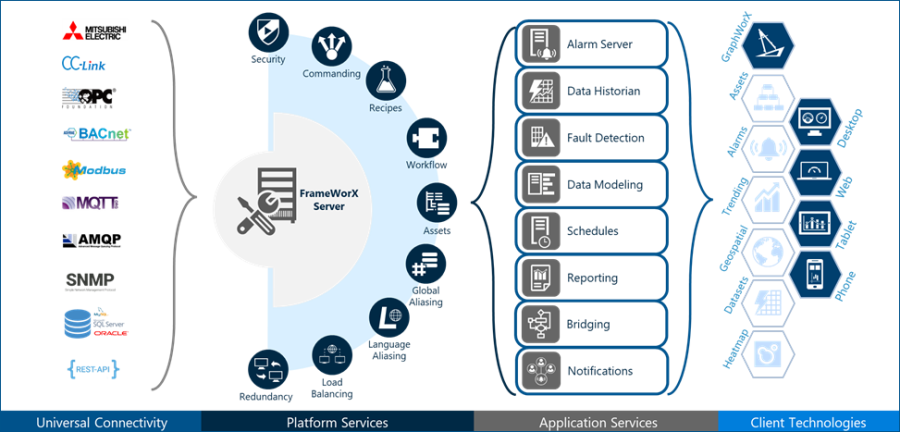GENESIS Data Flow Architecture Overview
The GENESIS system is built on a layered architecture that streamlines data flow from industrial devices, such as various sensors and equipment, to end-user applications. The data processing structure is consistent across deployment scenarios. The architecture consists of four key layers, each representing a stage in data processing:
- Universal Connectivity
- Platform Services
- Application Servers
- Clients

Universal Connectivity
This foundational layer enables GENESIS to connect with a wide range of industrial devices and data sources, establishing reliable access to real-time data and metadata from diverse equipment. It supports standard communication protocols, such as OPC UA, and vendor-specific interfaces like Mitsubishi Electric PLCs.
GENESIS supports the following data sources:
Platform Services
Platform Services is a unifying layer that bridges raw data sources and application-level processing and visualization. This layer acts as a traffic intersection where all incoming data converges.
FrameWorX Server is the central hub that unites, organizes, and facilitates communication throughout the system. It manages the following platform services:
- Licensing
- Security
- Assets
- Commanding
- Global aliasing and Language aliasing
- Redundancy and Load Balancing
- Health Monitoring
- Diagnostics
Application Servers
This layer consists of multiple GENESIS applications (components) that consume data from platform services.
GENESIS application services include:
- Alarming (Alarm Server and Alarm Historian)
- Alert Notifications
- Bridging
- Data Historian
- Data Modeling (BI Server)
- Fault Detection
- Project Reporting
- Recipes
- Schedules
Application servers pre-process, distribute, aggregate, log, and convert raw data into the desired formats that can be consumed and visualized by clients. The behavior of these servers is configured centrally in Workbench. Learn more
Clients
The top layer delivers processed data to various client types and technologies. GraphWorX provides tools for designing, configuring, and publishing graphical user interfaces tailored to the design requirements of the target client platform.
GENESIS supports the following client interfaces:
- Desktop clients (via GraphWorX runtime)
- Web browser clients
- Mobile and smart panel clients